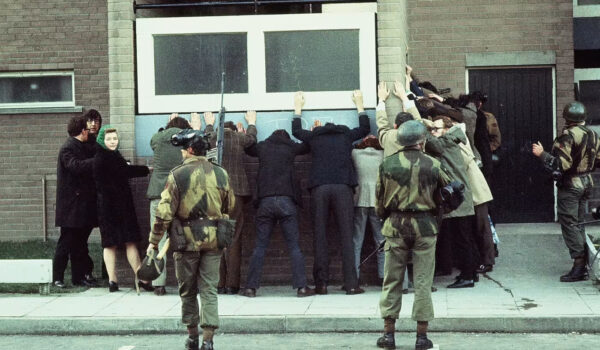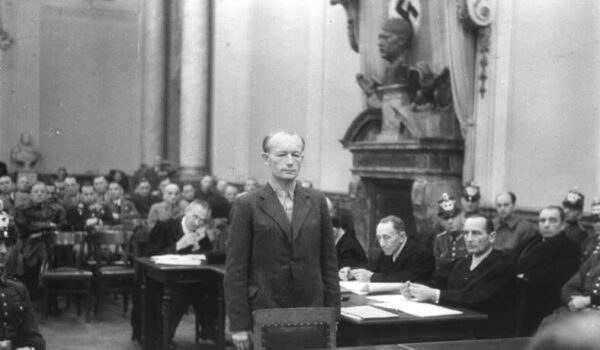Reflections on D-DayCommemorations…
- Posted on 14 Jul 2025
- 12 min read
By Major General Ollie Kingsbury OBE, Colonel Commandant, The Parachute Regiment
If I am honest, I think I have been guilty of not really taking the D-Day commemorations seriously enough in the past. My first visit to the Normandy battlefields was in 1984, on a school trip. I remember watching the big 1994 parachute drop for the 50th anniversary on the news, shortly before I joined the army.

I went on various battlefield studies and commemorative visits as a junior officer, and I was lucky enough to jump from a Dakota onto the Ranville DZ on the 70th anniversary when I was CO 2 PARA. So, I’ve done my bit for remembering: maybe ‘not taking seriously’ is too harsh. Maybe it’s more like, not thinking enough about what D-Day actually tells us, for us as a Regiment, for us as soldiers.
This past June, as Colonel Commandant of The Parachute Regiment, it felt different. I felt it more than when I’d been before. As a child, as a civilian, as a junior officer, I was interested but detached, or attached but more focused on checking the blokes knew the next timing or weren’t breaking a curfew, or wondering whether we’d be done in time to nip out to a bar.

I had more to do this year, which meant I saw more of the memorials, met more of the mayors and veterans’ families; at Pegasus Bridge, Merville, Le Mesnil de Bavent, Putot-en-Auges… and all the rest of those crossroads and fields and bunkers and walls with bullet holes. And I thought more about what that means: about the type of war that leaves machine gun bullet holes in the wall of a railway station in a village in France.
We joked about the mountain of wreaths in the back of the car from Regimental HQ, and the saluting endurance tests for all the national anthems — and about being taken by surprise not recognising the Belgian anthem; and wondering why on earth the Americans were there at Pegasus Bridge, shouting “wake up!” after ninety seconds of the two-minute silence.
Perhaps seeing so much of Normandy meant I was more immersed in it, hearing more of the tales, being closer to the French who feel still such gratitude. I admit to feeling a sadness — maybe even a little jealousy — that my generation’s wars were so far away. It seems doubtful that we veterans of Afghanistan will ever return to lay wreaths, even though Tom, and Mark, and Sean, and all the others — while fewer in number — are no less deserving of our salutes than those who fell in Normandy.

Perhaps that pulls me closer to D Day, as I use those ceremonies to reflect on my own mates. Perhaps it’s just that our misty-eyed reflection as we draw nearer the end of our careers makes all the history more poignant, as we realise we now have more memories than we have dreams for the future.
Certainly, the perspective from the passing of time makes it clearer to me that, whatever we achieve, each of us in our careers can only ever hope to add a few more stories to the history of our amazing Regiment. And some of the first and most important stories for The Parachute Regiment were written in June 1944.
They were written by the big, famous names: James Hill, in the 3rd Brigade HQ at the farm where we laid a wreath in bright sunlight and we were hosted with hot dogs and wine; or Terence Otway, in and around the grey concrete Merville Battery bunkers where we remembered the 9th Battalion in the rain at the wonderful museum.
They were written by the soldiers who played smaller roles then but who became such towering figures afterwards. Jack Watson jumped at Ranville, and did so much with veterans after the war until his death that the town’s mayor lays flowers at his statue now, outside the townhall. Jack’s family still return, not only to Jack’s monuments but to continue to pay tribute on his behalf to his fallen mates.
And they were written by those who never had the chance to go back as veterans, to see their elevation as heroes. Men like Emile Servias Corteil, buried at Ranville with his dog, lying now under the heart-breaking line “had you known our boy, you would have loved him too”. Boys too, like Bobby Johns of the 13th Battalion, killed at Le Mesnil crossroads aged just sixteen.

Two of the stories above — of Emile and Bobby — were pointed out for us in the quite beautiful homily at the Ranville cemetery, by Padre Adrian Teare. Adrian is himself a former 3 PARA tom and now the chaplain to the 9 PARA Reunion Club: see how our stories are entwined, each strengthening the others. Not a dry eye in the place as Adrian took us from tale to tale: “Let us honour their valour by treading lightly over the soft soil of Ranville, and all that binds us together… Under the shared heaven of a Norman sky.”
I wish now that I had found the deeper connections to those stories earlier in life; that I had known on my 1984 school trip that Terence Otway was still sharp and bright and leading tactical discussions at Merville with paratroopers there for the 40th anniversary; that I had spent more time as a young officer talking to the families of those who jumped and fought there, some visiting every year and some on once-in-a-lifetime trips; that I had been there away from the June crowds, and walked the rows of headstones to learn more of their stories. But I was younger then and life moved fast, and there would be time later for all that…
To anyone young reading this now, I know you will think you have all the time in the world — and I am sure you are right — but if you can, I encourage you to step off the racetrack for a minute or two and to dig deeper to learn the stories of those paratroopers. It will be time well spent, for these are your stories too.
Maj Gen Ollie Kingsbury






